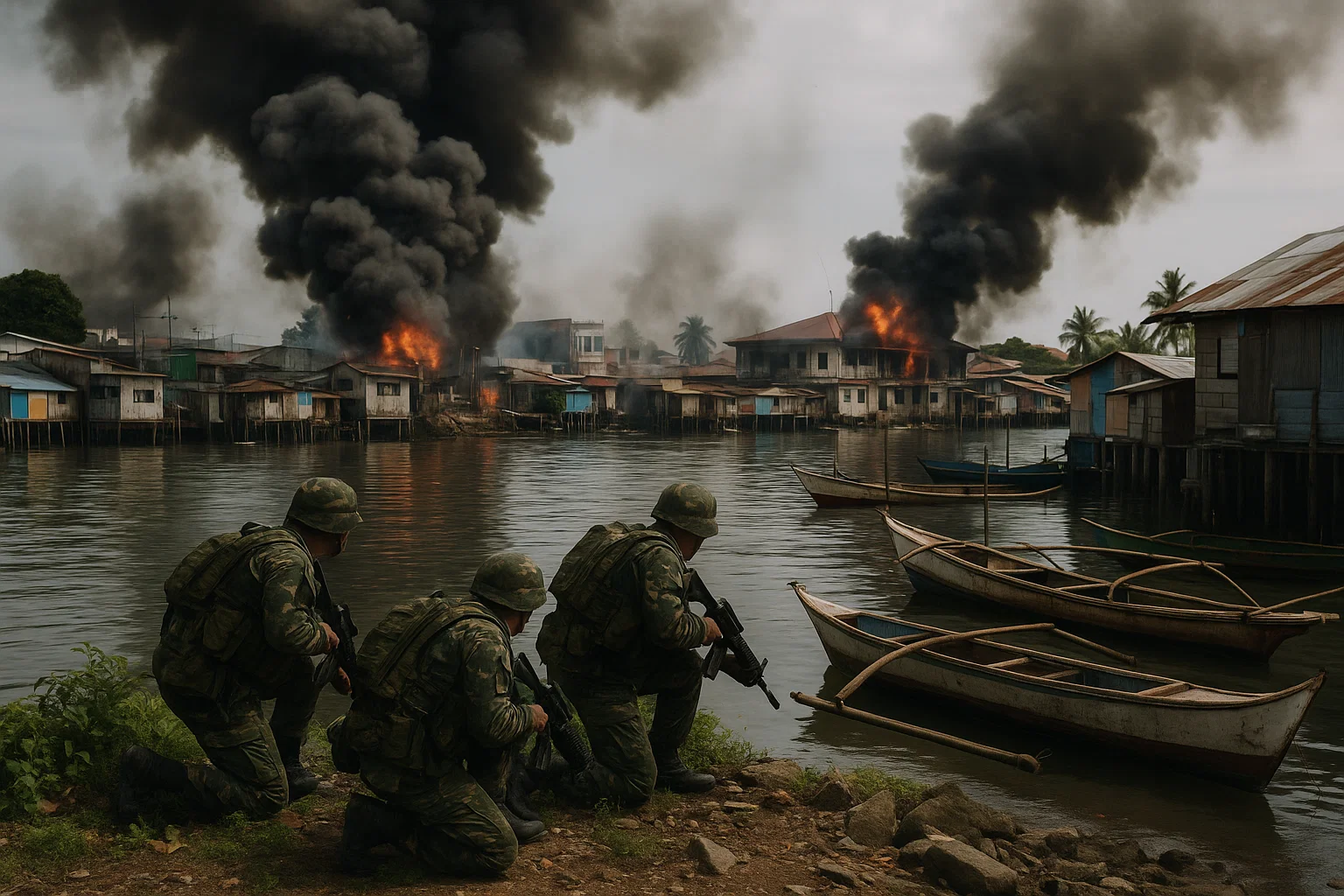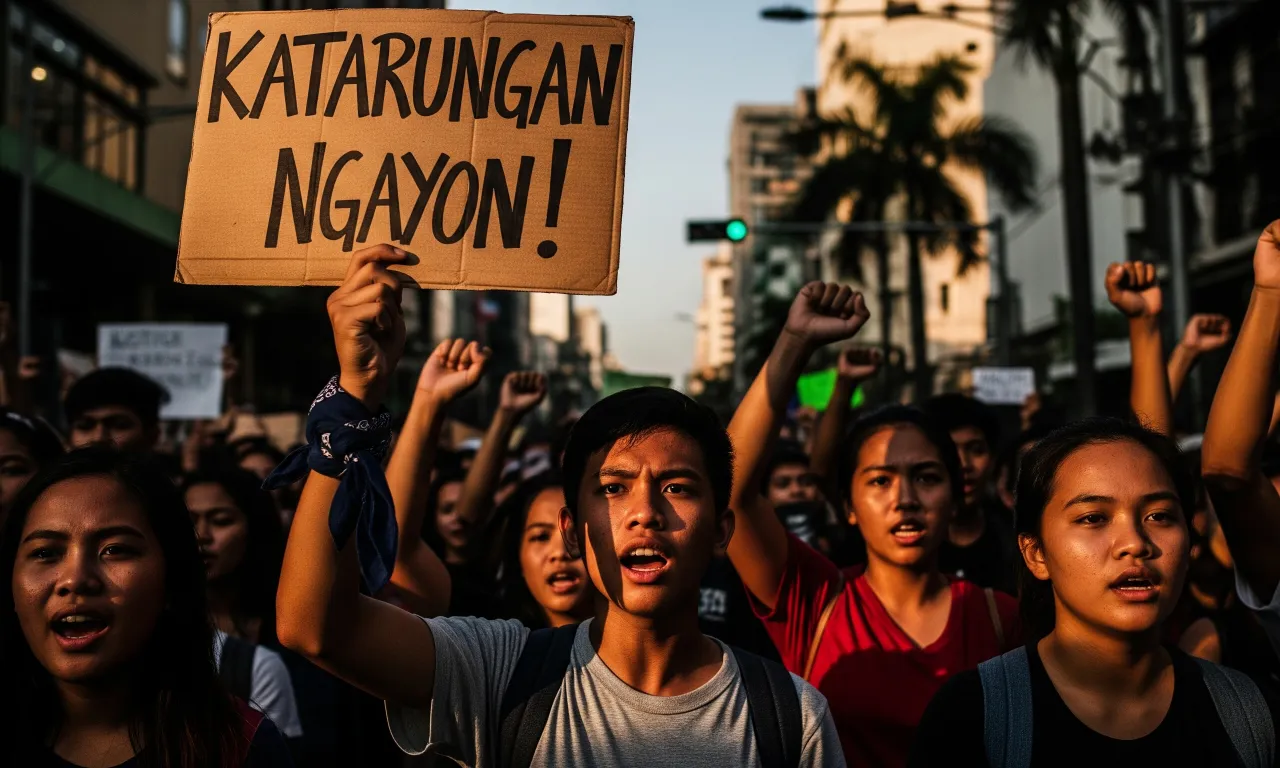On the morning of September 9, 2013, gunfire erupted in Zamboanga City’s coastal barangays. Armed fighters from the Moro National Liberation Front (MNLF), loyal to founding chairman Nur Misuari, landed in small boats and quickly occupied several neighborhoods. For the next three weeks, the city became a war zone, with street-to-street battles, sniper fire, and massive civilian displacement. The Zamboanga siege truth remains a subject of debate — was it a botched rebellion, a deliberately staged provocation, or part of a larger strategic play?
- 🌏 Zamboanga Before the Siege
- 📅 Table 1: Timeline of Events (Sept. 9–28, 2013)
- 🎯 Main Players in the Zamboanga Siege
- ⚔ The MNLF’s Role and Objectives
- 📜 The Official Government Explanation
- 🕵 Allegations of a Staged Event
- 🏚 Civilian Impact
- 📰 Media Coverage and Narrative Control
- 🌏 International Reactions
- 🛠 Recovery and Rehabilitation Efforts
- ❓ Key Questions That Remain Unanswered
- 📌 Frequently Asked Questions (FAQ)
- 🕯 Final Reflection
🌏 Zamboanga Before the Siege
Before September 2013, Zamboanga City was a bustling economic hub of Western Mindanao. Known as the “Asia’s Latin City” for its Chavacano heritage, it was also a strategic port linking Mindanao to the Sulu Archipelago and nearby Malaysia. But beneath the surface, political and ethnic tensions simmered.
Zamboanga had long been a flashpoint in the Mindanao conflict. The city was predominantly Christian, but its surrounding provinces had significant Muslim populations with deep historical grievances. Although the Moro Islamic Liberation Front (MILF) was in peace talks with the government, the MNLF — from which the MILF had split — felt sidelined. Nur Misuari, claiming betrayal of the 1996 Final Peace Agreement, began mobilizing loyalists.
Reports from residents and local journalists suggested a growing presence of armed men in the islands near Zamboanga weeks before the siege. Yet the scale and swiftness of the assault caught many by surprise.
📅 Table 1: Timeline of Events (Sept. 9–28, 2013)
| Date | Event Description |
|---|---|
| Sept. 9 | MNLF fighters land in coastal barangays; initial firefights erupt |
| Sept. 10 | Hostage-taking of civilians begins; MNLF raises flag in some areas |
| Sept. 11–13 | AFP launches clearing operations; intense urban combat |
| Sept. 14–18 | Heavy fighting; fires consume residential blocks |
| Sept. 19–22 | Military gains ground; more hostages rescued |
| Sept. 23–27 | Remaining MNLF fighters cornered; final assaults |
| Sept. 28 | Government declares siege over |
🎯 Main Players in the Zamboanga Siege
- MNLF Faction — Loyalists to Nur Misuari
- Nur Misuari — MNLF founder, accused of masterminding the siege
- AFP & PNP — Armed Forces of the Philippines and Philippine National Police
- Local Government of Zamboanga — Led by Mayor Maria Isabelle Climaco-Salazar
- Civilians — Over 100,000 displaced residents
⚔ The MNLF’s Role and Objectives
According to the government, the MNLF fighters aimed to raise their flag at Zamboanga City Hall as a symbolic assertion of independence. The siege, they said, was part of an “armed propaganda” campaign to pressure Manila into recognizing their demands. Misuari denied direct involvement, claiming his followers acted independently.
Some analysts argue the assault was poorly planned — the fighters lacked heavy weaponry and clear escape routes. Others suggest it was never intended as a military victory but as a political statement, regardless of cost.
📜 The Official Government Explanation
The Aquino administration framed the siege as a law enforcement and counterterrorism operation. Officials said MNLF forces infiltrated the city to sow chaos and derail peace talks with the MILF. They emphasized the heroism of government troops who rescued hundreds of hostages and restored order.
The military reported killing over 200 MNLF fighters, capturing dozens more, and recovering caches of rifles and explosives. Civilian casualties were officially recorded at more than 100 dead, with thousands of homes destroyed.
🕵 Allegations of a Staged Event
Critics, including some local leaders and academics, questioned the Zamboanga siege truth as presented by the government. They pointed to several unusual elements:
- The AFP reportedly had prior intelligence on MNLF movements but failed to prevent the landing.
- The scale of destruction, particularly fires that gutted entire communities, led some to suspect deliberate clearing operations.
- The siege conveniently diverted public attention from other national controversies at the time.
Table 2: Official Narrative vs. Conspiracy Claims
| Aspect | Official Narrative | Conspiracy Claims |
| Purpose of siege | Derail peace talks, assert MNLF independence | Create pretext for military crackdown or political distraction |
| Government role | Defensive, reactionary | Allowed or facilitated siege for strategic ends |
| Destruction | Collateral damage from combat | Intentional to reshape urban areas |
🏚 Civilian Impact
The human toll was immense. Over 100,000 residents were displaced, many crammed into evacuation centers for months. Entire neighborhoods — mostly Muslim-majority coastal barangays — were reduced to ash. Property loss ran into billions of pesos. Survivors described harrowing escapes, carrying children through crossfire and leaving behind homes they would never see again.
Aid groups criticized the slow pace of rehabilitation, with some families still in temporary shelters years later. The destruction deepened mistrust between affected communities and the state.
📰 Media Coverage and Narrative Control
Local and national media had limited access to frontline areas during the siege. Military briefings became the main source of information, shaping public perception. Some journalists accused authorities of downplaying civilian suffering and overemphasizing military success.
Social media played a growing role, with residents posting real-time updates and photos — sometimes contradicting official accounts. This fueled debates about censorship and propaganda in conflict reporting.
🌏 International Reactions
The siege drew concern from foreign governments and international organizations. The United Nations condemned the violence and displacement, while the United States and other allies pledged humanitarian aid. However, no foreign power publicly challenged the government’s narrative.
For regional security analysts, the siege underscored Mindanao’s volatility and the fragility of peace efforts.
🛠 Recovery and Rehabilitation Efforts
Post-siege recovery faced numerous challenges: rebuilding destroyed homes, restoring livelihoods, and addressing trauma. The government launched the Zamboanga City Roadmap to Recovery and Reconstruction (Z3R), but progress was slow. Land disputes and bureaucratic red tape hampered rebuilding.
Many displaced families relocated permanently to other areas, altering the city’s demographics. NGOs stressed the need for reconciliation programs to heal divisions.
❓ Key Questions That Remain Unanswered
- Could the AFP have prevented the siege with earlier action?
- Why were some neighborhoods more heavily destroyed than others?
- Was the scale of displacement proportional to the security threat?
- Did political timing influence the government’s response?
- Were all MNLF fighters accounted for after the siege?
📌 Frequently Asked Questions (FAQ)
Q: Was the siege politically motivated?
A: The government maintains it was a security response to an MNLF plot. Critics argue the timing and handling suggest possible political motives, but no definitive proof has surfaced.
Q: How long did the siege last?
A: It lasted 20 days, from September 9 to 28, 2013.
Q: How many people were displaced?
A: Over 100,000 residents were displaced, many of whom were from Muslim-majority coastal barangays.
Q: Has the city fully recovered?
A: Parts of Zamboanga have been rebuilt, but some former residents remain in transitional housing, and economic recovery in affected areas has been slow.
Q: Was Nur Misuari charged?
A: Yes, Misuari was charged with rebellion but later released on bail; his case remains entangled with political negotiations.
Q: Did the siege affect peace talks?
A: It heightened tensions and complicated peace processes, but talks with the MILF eventually resumed.
🕯 Final Reflection
The 2013 Zamboanga siege remains a contested chapter in the Philippines’ recent history. Whether seen as a desperate act of rebellion, a preventable security failure, or a calculated political maneuver, its consequences are undeniable: lives lost, communities uprooted, and trust eroded.
In conflict zones, truth is often the first casualty. For Zamboanga’s residents, the siege is not just a story told in reports — it is a lived memory etched into the city’s streets and its people’s hearts. The question remains: will the real story ever be fully known?




